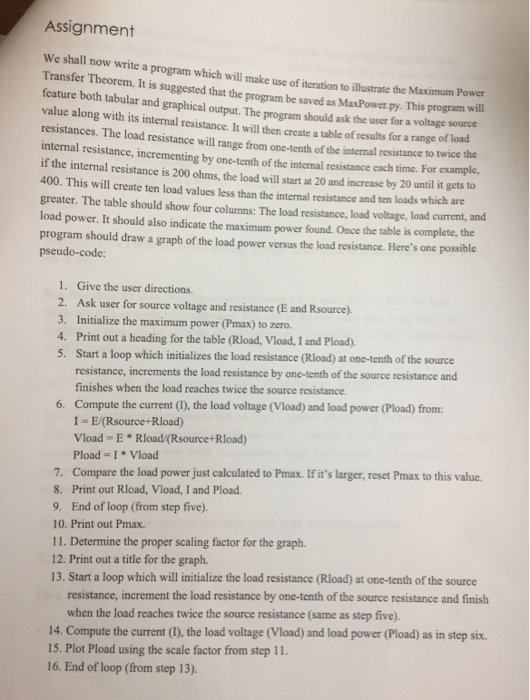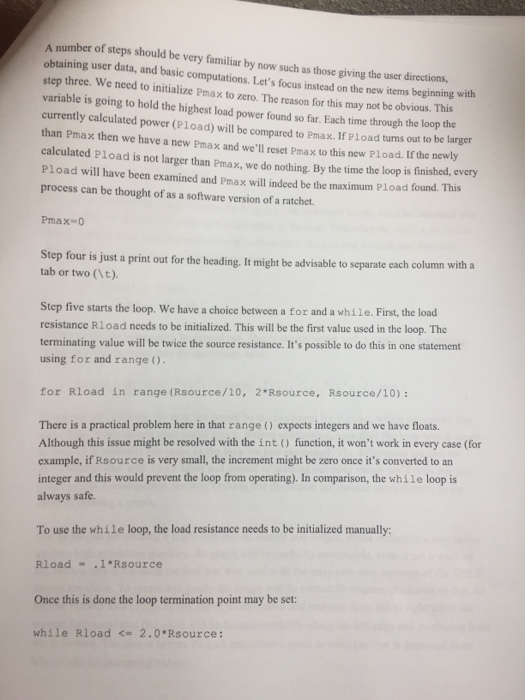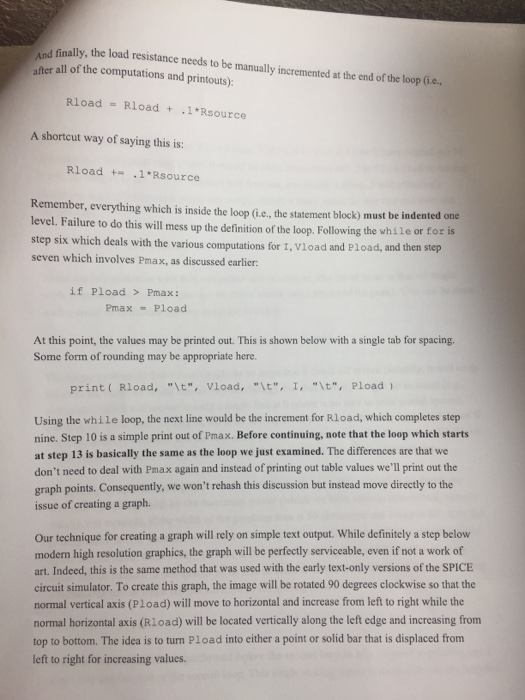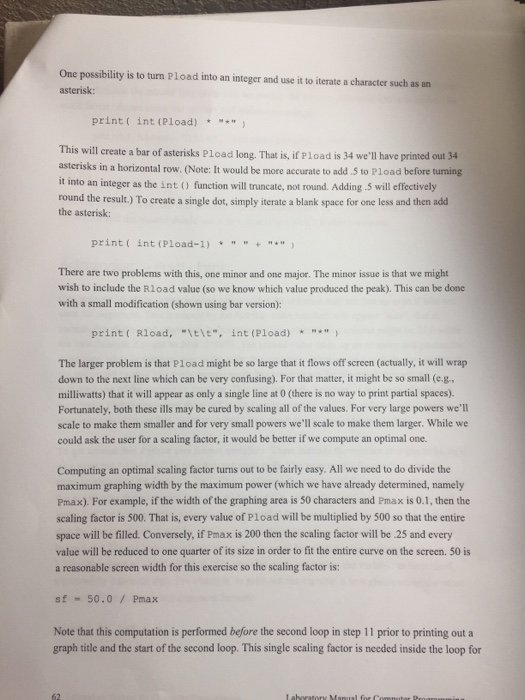Need help with this beginners python program

Assignment We shall now write a program which will make use of iteration to illustrate the Maximum Power Transfer Theorem. It is suggested that the program be saved as MaxPowerpy. This program wil feature both tabular and graphical output. The program should ask the user for a voltage source value along with its internal resistance. It will then crcate a table of results for a range o resistances. The load resistance will range from one-tenth of the internal resistance to internal resistance, incrementing by one-tenth of the internal resistance cach time. For example, if the internal resistance is 200 ohms, the load will start at 20 and increase by 20 until it gets to 400. This will create ten load values less than the internal resistance and ten loads which are greater. The table should show four columns: The load resistance, load voltage, load current, and load power. It should also indicate the maximum power found. Once the table is complete, the program should draw a graph of the load power versus the load resistance. Here's one possible pseudo-code: f load 1. Give the user directions. 2. Ask user for source voltage and resistance (E and Rsource). 3. Initialize the maximum power (Pmax) to zero. 4. Print out a heading for the table (Rload, Vload, I and Pload). 5. Start a loop which initializes the load resistance (Rload) at one-tenth of the source resistance, increments the load resistance by one-tenth of the source resistance and finishes when the load reaches twice the source resistance. 6. Compute the current (), the load voltage (Vload) and load power (Pload) from: IE/(Rsource+Rload) Vload-E Rload/(Rsource+Rload) Pload = 1 * Vlad 7. Compare the load power just calculated to Pmax. If it's larger, reset Pmax to this value. 8. Print out Rload, Vload, I and Pload 9. End of loop (from step five). 10. Print out Pmax. 11. Determine the proper scaling factor for the graph. 12. Print out a title for the graph. 13. Start a loop which will initialize the load resistance (Rload) at one-tenth of the source resistance, increment the load resistance by one-tenth of the source resistance and finish when the load reaches twice the source resistance (same as step five). 14. Compute the current (1), the load voltage (Vload) and load power (Pload) as in step six. 15. Plot Pload using the scale factor from step 11. 16. End of loop (from step 13)












